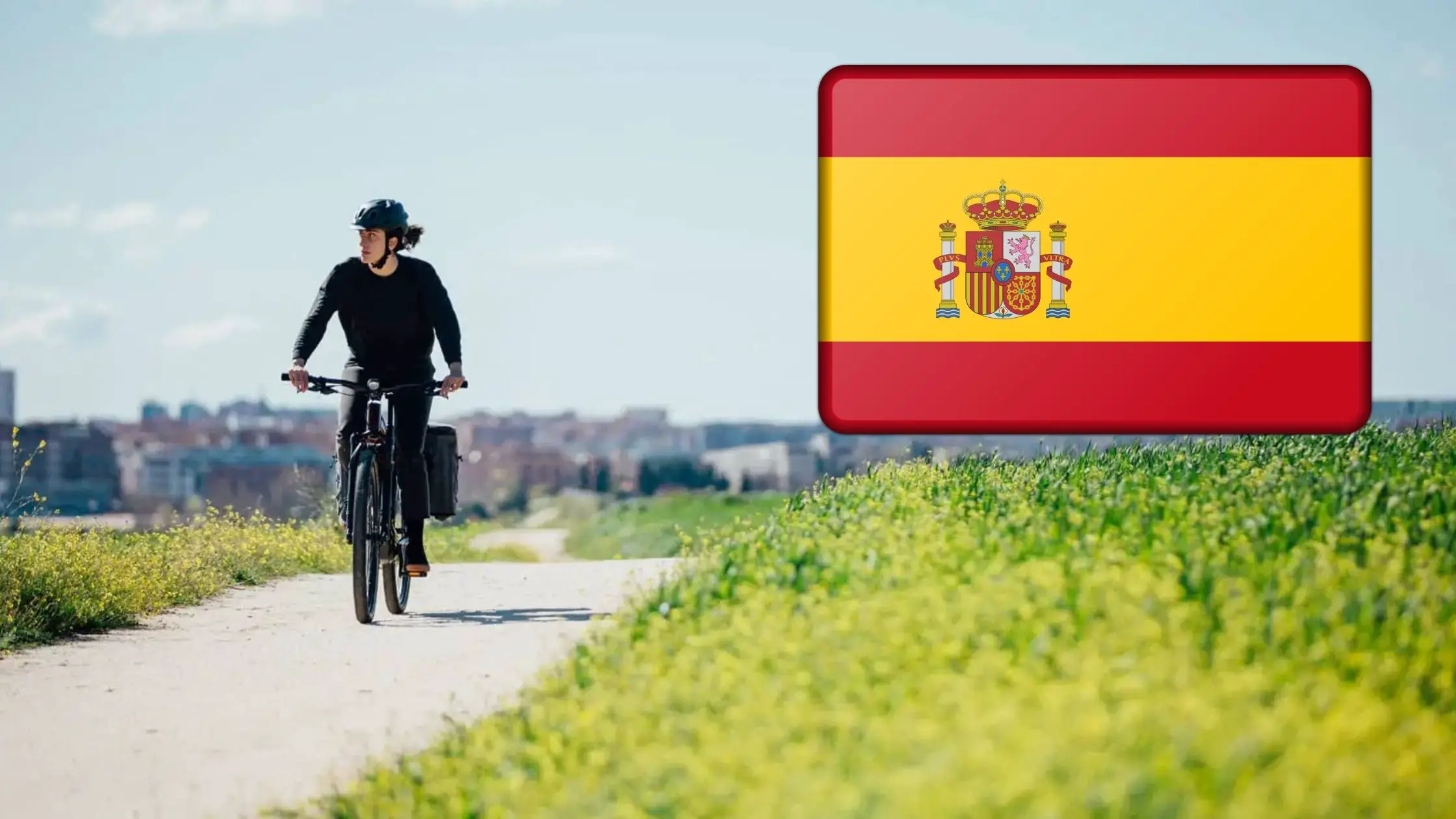Last Updated on January 9, 2023 by Igor Karni

We have talked about using gears on an electric bike in this article. Now let’s discuss specifically electric assistance levels and how to best use them.
How to choose electric assist levels on an e-bike? For e-bikes with more than one electric assistance level, maintaining a steady riding pace is key. Use different electric assistance levels in combination with mechanical gears to maintain a steady pace and confront various terrain.
Most models of e-bikes may have three, four, and even five different levels of electric assistance. When is it best to use each of them? What electric assistance level saves more battery power? What if you decide to ride on the highest level of electric assistance throughout your entire trip? Do e-bike riders ever use all available levels of electric assistance?
In this article, I am mostly referring to pedelec electric-assisted bikes. Pedelec e-bikes are electric bicycles, which you have to pedal in order to move forward and engage their electric motors. There are also throttle electric bikes, which you can ride as scooters. No need to actively pedal an e-bike that has a throttle.
What are electric assistance levels on an e-bike?
Electric assistance levels or electric speeds on an e-bike define how much electric motor is helping your pedaling efforts. On currently available models, there could be a minimum of one and a maximum of seven or even eight levels of electric assistance on an e-bike.
For example, Bosch electric assistance system has five levels, which are OFF > ECO > TOUR > SPORT > TURBO, while Shimano power system uses only four: OFF > ECO > NORMAL > HIGH.
Each electric assistance system (Bosch, Yamaha, Shimano, or other) complements your pedaling efforts by giving you more electric power, depending on the assistance level selected.
Bosch electric system, for example, gives you:
| Electric assistance level | Additional power |
| ECO | +40% |
| TOUR | +100% |
| SPORT | +150% |
| TURBO | +225% |
How many electric assistance levels are needed?
This is a great question and the answer is – it depends. And it depends mostly on how you intend to use your e-bike, how well trained you are, and what terrain you plan to mostly be riding through. Here are a few rules of thumb, I would use.
Single-speed electric bicycles
One electric assistance level (or speed) might be enough for you, if
- you are riding mostly on flat streets,
- you are quite fit and
- you mostly use your e-bike for shopping or other casual trips in a city.
Having one electric assistance level works well with the motor that can produce high rotating power (or torque). It will turn the wheels of your e-bike faster with the same pedaling effort from you.
Do you feel like using your e-bike more like a regular bicycle 90% of the time and only turn on the motor for hill assist or when you get tired? In that case, you will be OK with only one electric assistance level.
For this type of usage, it still makes sense to have multiple mechanical gears so you can have more variations for your pedaling efforts.
Read also: How not to sweat on your e-bike commute? Trip planning – in this article, on the road – in this article, when you arrive – in this article.
Up to three e-speeds
It would be good to have, at least, three electric assistance levels if
- you plan to use your e-bike for commute and/or
- you plan to tackle moderate or even some steep hills.
Three levels of electric assistance will also serve you well if you are thinking about a utility-type e-bike.
Up to five e-speeds
If you are thinking about daily exercise on mixed terrain, or about recreational rides in the countryside, it is best to consider an e-bike with five levels of electric assistance. This e-bike will also serve well for your guests, who may not necessarily be regular cyclists.
More than five e-speeds
There are quite a few models on the market, that have up to eight/nine electric assistance levels. These models will serve you well for fast riding – over 40 km/h (25 miles/h) limit of most pedelec e-bikes, on mixed terrain or on steep or long hills.
You will need to learn how to use each of those multiple e-speeds though, and whether they make any sort of difference in your rides. Eight or nine electric speeds sound like a bit too many to me. This is just my personal view.

Riding on the highest level of electric assistance
As this is an electric bike, why cannot one just ride at the highest or at the lowest level of electric assistance all the time and forget about shifting the assistance levels altogether? As if it was a single-speed e-bike, but using max electric power, for example?
Generally speaking, there is nothing wrong with riding this way. And you may well choose to do so until you decide to use other electric assistance levels. There are some points to consider, however:
Reduced battery life
Using a constant high level of electric assistance will dramatically reduce the range of the battery. More fun, faster speed equals less battery life.
Read also: What is the difference between e-bike batteries? And, How far can e-bikes go? What is the e-bike range?
To give you an example, on an e-bike my wife is using, ECO mode estimated battery life is 100km (62 miles), and SPEED mode (maximum level of electric assistance on this model) estimated battery life is only 36km (22 miles). Sure, feel free to use SPEED mode, if your battery is fully charged and your journey is around 35km (20 miles).
Starting speed
Taking off from a standing start on a loaded bike (such as a utility bike, for example) can be hard work. Consider, for example, that you are starting in front of other road traffic.
It would be best to accelerate as fast and as safely as you can. Staying at a low assistance level means you will have to pedal much harder to get going. And this then defeats one of the major benefits of riding an e-bike. E-biking should be easy!
Bike control
When you are pedaling nice and slow (low cadence), you may find your balance is not as good as when you are pedaling faster. This is especially true as you set off from a stopped position.
Try launching at a higher electric assistance level. Otherwise, you may find yourself wobbling over the road until you gain momentum.
Riding smoothness
When riding on the highest power level, you will find the bike will accelerate very quickly. It will then reach its cutoff speed limit. The motor will then either immediately stop all electric assistance (for Shimano models) or quickly reduce electric assistance (for Bosch models).
Depending on how hard you are pedaling at that moment, your speed may then start to reduce until you fall below the speed limit cutoff. At this point, the motor will again start providing full assistance immediately. You will speed forward again until you again hit the speed limit.
Read also: Best city e-bikes for women, reviewed and compared. And, Best folding e-bikes for women, reviewed and compared.
This brisk acceleration/deceleration of power is not best for an e-bike’s power system. It is also not the most comfortable way to enjoy an e-bike ride. On top of that, the motor noise raising up and down to full power can be pretty annoying.
Consider that you will likely be bypassing the speed cutoff limit when riding on the highest level of electric assistance. Jumping above and falling below this cutoff speed limit will not allow you to maintain a smooth ride.
Motor efficiency
Similar to petrol engines, electric motors have their optimum range. For example, using a mid-drive motor at low motor speeds will make it run at suboptimal levels. Try moving off from a traffic light in a high electric assistance level, compared to a low electric assistance level. Follow up with shifting electric assistance levels and you will see the difference.
Power system wear
Using the full range of mechanical gears and electric assistance levels will help even out the wear on the power system (drivetrain), especially the rear cassette of your e-bike.
Mid-drive motors, for example, do create more wear on the drivetrain due to the torque being applied. Using all the cogs on the rear cassette means they all wear evenly, along with the chain.
Maintaining a steady pace when going uphill
Do not forget that you will need to pedal faster when going uphill on an electric bike. This does not mean that you will have to pedal harder. Use mechanical gears to adjust your level of effort for each level of electric assistance.
As you pedal faster, you will receive more power from the motor, which will make it easier for you to climb the hill.
Read also: Can e-bikes help climb steep hills? And, How safe are electric bikes?
For steeper hills, it helps to maintain 80 to 90 rotations per minute. When you pedal at this speed, you will feel that your overall level of effort is actually much lower. You will feel that you are getting significantly more power from the motor, as compared to when you pedal slower.

Will I be using all of the electric assistance levels?
It is a good practice to use all available electric speeds that are available to you. This practice helps in maintaining steady pedaling efforts (which means no-sweat commutes, for example) and transferring more power from the motor during steep climbs.
You end up spending much less effort on pedaling on any terrain. To me, this is the whole purpose of having an electric bike vs a conventional bike.
So yes, use all available electric assistance levels.
Will I be using all mechanical gears on an electric bike?
If your e-bike has more than seven mechanical gears, you likely won’t be frequently using every mechanical gear available to you. And you’re not supposed to.
The ever-increasing number of mechanical gears on bikes is mostly marketing hype. What you really need is a good range of mechanical gears. You need mechanical gears that are low enough for going up tough hills to complement electric power assistance.
And you need mechanical gears that are high enough that you can keep pedaling when going down gentle declines when electric assistance is off. If your mechanical gear range is good, and there is enough of the range, then the number of mechanical gears is irrelevant.
The only way to tell what the mechanical gear range of a bike is like is to take it on a test ride. Test it by going up the hardest hill you will be going up in the future, and going as fast as you care to down a gentle decline.
Closing thoughts
Similar to understanding the mechanical gear range needed, choosing the right electric assistance level on an e-bike, and choosing the right combination of electric assistance levels and mechanical gears, comes with practice.
Read also: How to select the best e-bike for your needs? Making your educated e-bike selection choice – and also in this article. And, How much does a good e-bike cost? Comprehensive e-bike pricing guide (with 46 examples).
Start by using a wide range of electric assistance levels and only a select number of mechanical gears. As you become more experienced, you will naturally increase the usage of electric speed and mechanical gear combinations. This, in turn, will give you more flexibility and more fun in using your e-bike on any terrain you choose for your rides.
Igor is a sustainable mobility and green energy advocate. His mission for Easy E-biking is to help make electric cycling simple, practical, and fun. Follow him on Facebook and LinkedIn.




